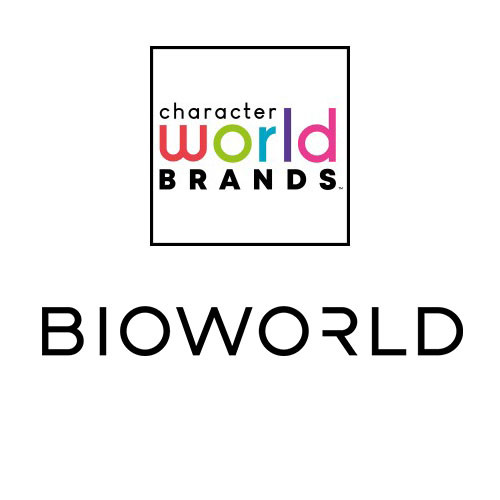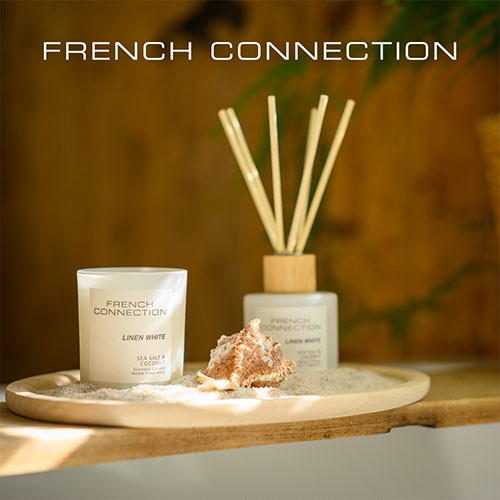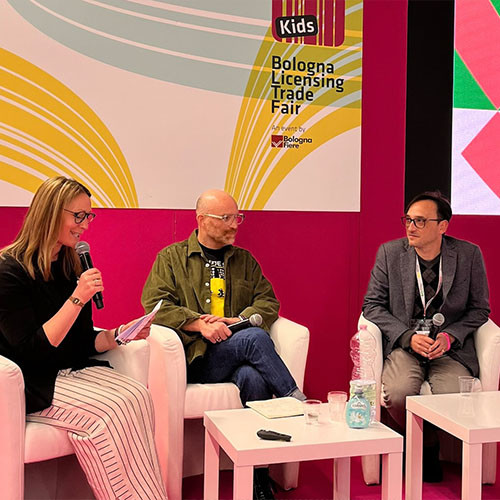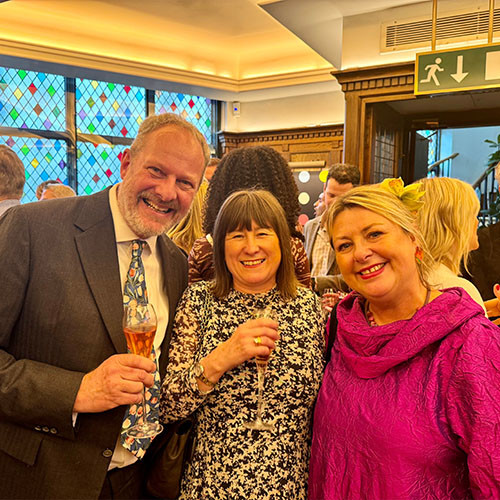Start Licensing’s Ian Downes makes a visit to Bristol and has it confirmed that licensing has, and is, playing a role across the spectrum of retail, both great and small.
All retailers great and small, the licensing industry needs them all. With due acknowledgement to Cecil Frances Alexander. Maybe we should all sing this as the doors of Brand Licensing Europe open to acknowledge the role retail plays in licensing.
We are definitely an industry that relies heavily on retail to get our products into consumers hands, but conversely arguably retailers need licensing and licensed products as a means of accessing ‘retail content’ – aka product that is in demand from their consumers and indeed brands that bring people into store. Licensing can also help retailers create noteworthy marketing moments in a flat market.
I have visited a variety of retailers over the last few weeks. These visits have confirmed that licensing has and is playing a role across the spectrum of retail – great and small – whether that is specialist retailers, independents or chains like Primark.
I was in Bristol at the weekend and took the opportunity to visit a couple of shops on Gloucester Road – this is a street and area that embraces independent retail. It is often easy to imagine that licensing and independent retail don’t go together, but visits like my Bristol one suggest otherwise. Independent retailers seem adept at picking licensed brands and products that fit their aesthetic.
 The Ustudio shop describes itself as “… a mini concept department store with a focus on the beautiful simplicity and craftsmanship of Scandinavian and Japanese design”. Ustudio is a well presented shop and a relaxing place to shop. It seemed to be a popular local shop as well. While at first glance it might not seem a natural home for licensed products, on closer examination I did find some. These were products chosen to fit the shop’s personality. I saw a few collectable figurines featuring IP like Snoopy, Andy Warhol and Rolling Stones. These were design pieces created to collect, but also display. A great example of the market move to ‘adult’ targeted toys and collectables that are designed to appeal to fans. They were also good examples of the the ‘collab’ culture that exists in pop culture these days.
The Ustudio shop describes itself as “… a mini concept department store with a focus on the beautiful simplicity and craftsmanship of Scandinavian and Japanese design”. Ustudio is a well presented shop and a relaxing place to shop. It seemed to be a popular local shop as well. While at first glance it might not seem a natural home for licensed products, on closer examination I did find some. These were products chosen to fit the shop’s personality. I saw a few collectable figurines featuring IP like Snoopy, Andy Warhol and Rolling Stones. These were design pieces created to collect, but also display. A great example of the market move to ‘adult’ targeted toys and collectables that are designed to appeal to fans. They were also good examples of the the ‘collab’ culture that exists in pop culture these days.
Another brand in-store that caught my eye was Smileyworld. Ustudio stocked a number of Smileyworld lines including lighting. Again, a brand and product chosen to fit into the shop’s focus. Both these examples show that licensing and licensed products can fit in bespoke retail outlets like Ustudio when product is well chosen and designed.
Another Gloucester Road shop that I visited was Totally Toys, which is a family run business. The shop first opened in 1988. It was good to see a traditional toy shop open for business.
Totally Toys felt like part of the community and there was an emphasis in-store on ‘shopping local’ and a sense that the shop owners really understood what their local customers want to buy. I imagine they have great product knowledge and insight. A great example of the local focus was that it had the recently launched Bristol Monopoly in stock.
 The shop also sells non toy items like books – a well featured book brand was the That’s Not My… series. This range was supported by a promotion whereby a shopping bag was free with purchase of any That’s Not My… book. A simple but effective promotion. The shop has developed specific displays of product by category, supplier or brand which creates real ‘in-store’ focus. Licensing plays its part in this – a good example being a well displayed selection of licensed memory card games from Ravensburger with brands like Harry Potter, Bluey and PAW Patrol featuring. Unsurprisingly the shop also had good displays for Bluey and Peppa Pig, backing these brands in-depth. I am sure the shop owners are well connected to suppliers, but as noted earlier I think at the local retail level like this they also listen to their consumers and take note of their requests, plus of course monitor their sales on a daily basis.
The shop also sells non toy items like books – a well featured book brand was the That’s Not My… series. This range was supported by a promotion whereby a shopping bag was free with purchase of any That’s Not My… book. A simple but effective promotion. The shop has developed specific displays of product by category, supplier or brand which creates real ‘in-store’ focus. Licensing plays its part in this – a good example being a well displayed selection of licensed memory card games from Ravensburger with brands like Harry Potter, Bluey and PAW Patrol featuring. Unsurprisingly the shop also had good displays for Bluey and Peppa Pig, backing these brands in-depth. I am sure the shop owners are well connected to suppliers, but as noted earlier I think at the local retail level like this they also listen to their consumers and take note of their requests, plus of course monitor their sales on a daily basis.
The shop also supports categories like arts and crafts well, plus educational toys. A good example of this licensing wise was a range of Horrible Science kits from GALT. I daresay the shop sells the books as well delivering a good product choice for customers looking for fun science products. I suspect Totally Toys does well from the party market where consumers look to buy a gift to take to a children’s party – format, brand recognition and price are important in this purchasing mode.
As a whippet owner I often find myself in pet shops including Pets At Home. Pets At Home features licensed ranges from time to time, but the pet market is a challenging one not least because of the strength of established brands in the category.
 Recent licensed activity I have seen in-store includes Tonka – tough toys for dogs; a Dolly Parton pet accessories range; NERF dog toys and character-identified aquarium sets including SpongeBob. However, my recent visit revealed Pets At Home’s partnership with animal welfare charity The Blue Cross. Activity includes the opportunity to ‘top up’ your bill at the till, plus the chance to purchase a plush keyring which are displayed at till point and purchasing a food bag for animals to ‘donate’ to food banks. It is a well orchestrated campaign which is delivered well in-store – including the sales assistant asking me if I wanted to top up my bill. It seems a great fit between retailer and charity. As well as fundraising I think it is helping spark a conversation about pet welfare and pet care in general. It is a great example of a specialist retailer using their reach and influence within a specialist category well.
Recent licensed activity I have seen in-store includes Tonka – tough toys for dogs; a Dolly Parton pet accessories range; NERF dog toys and character-identified aquarium sets including SpongeBob. However, my recent visit revealed Pets At Home’s partnership with animal welfare charity The Blue Cross. Activity includes the opportunity to ‘top up’ your bill at the till, plus the chance to purchase a plush keyring which are displayed at till point and purchasing a food bag for animals to ‘donate’ to food banks. It is a well orchestrated campaign which is delivered well in-store – including the sales assistant asking me if I wanted to top up my bill. It seems a great fit between retailer and charity. As well as fundraising I think it is helping spark a conversation about pet welfare and pet care in general. It is a great example of a specialist retailer using their reach and influence within a specialist category well.
A final observation about the relationship between retail and licensing is one I made a couple of weeks ago in Primark’s Basingstoke branch. You can’t say I’m not well travelled. For many consumers and licensors, Primark is the ‘go to’ retailer. It is certainly a retailer that has recognised the pulling power of licensing and how licensed brands can work for it. Primark has built up a good network in licensing, built around licensee suppliers and brand owners. My observation on my most recent visit was how Primark is embracing a diverse portfolio of brands these days and not just focusing on entertainment brands. In a sense it reflects the changing licensing landscape, which I guess reinforces the fact that Primark is well tuned into the market. Or conversely it might mean Primark is helping shape the market.
 With this thought in mind it was interesting to see Primark featuring collegiate brands like Yale and Harvard. It also gave a lot of space to adult apparel featuring FMCG brands including Heinz, Chupa Chups and Coca-Cola. FMCG brand owners seem to be more relaxed about seeing the brands feature in the licensing sector. In this case I suspect brands might feel that having a brand presence in a retailer like Primark is a great billboard for their brand and an effective path to consumer engagement.
With this thought in mind it was interesting to see Primark featuring collegiate brands like Yale and Harvard. It also gave a lot of space to adult apparel featuring FMCG brands including Heinz, Chupa Chups and Coca-Cola. FMCG brand owners seem to be more relaxed about seeing the brands feature in the licensing sector. In this case I suspect brands might feel that having a brand presence in a retailer like Primark is a great billboard for their brand and an effective path to consumer engagement.
Branded apparel also creates social media moments. A counterpoint to this is that there has to be a balance between brand objectives and licensing needs. Brand bands also have a strong play in Primark with the likes of Nirvana and Rolling Stones featuring. Of course they also support character brands and it was interesting to see brands like Miffy featuring in adult nightwear.
 Some brands have aged up in recent years and rights holders have recognised this by adapting their design approach. Disney features large throughout the store and certain brands like The Lion King are supported with feature areas. For Primark, Disney represents a partner and archive that can deliver a variety of brand opportunities that fit across its retail activity and demographics. Disney is a very efficient one stop licensing shop for it. Primark is also tapping into the trend for US sports with NFL and NBA ranges. There is also representation for gaming brands like Donkey Kong and Minecraft.
Some brands have aged up in recent years and rights holders have recognised this by adapting their design approach. Disney features large throughout the store and certain brands like The Lion King are supported with feature areas. For Primark, Disney represents a partner and archive that can deliver a variety of brand opportunities that fit across its retail activity and demographics. Disney is a very efficient one stop licensing shop for it. Primark is also tapping into the trend for US sports with NFL and NBA ranges. There is also representation for gaming brands like Donkey Kong and Minecraft.
Primark provides a great insight into what’s ‘happening’ in licensing not least when reviewing which brands it is buying in-depth. Bluey being a great example of this – Bluey is well supported in-store, underpinning its current success and popularity in market.
As we approach BLE, it is reassuring to see that licensing has a role to play across retail and that it seems to be valued by retailers. Retailers seem better at picking the brands and products that work for them. These won’t be the same for and in every retailer. Indeed that is one of licensing’s strengths – licensed products are a targeted and efficient way to reach specific consumer groups when selected carefully and with insight.
I have printed off some song sheets and look forward to leading a bit of community singing at BLE.
Ian Downes runs Start Licensing, an independent brand licensing agency. His X handle is @startlicensing and on Instagram he is @iandownesphotos – he would welcome your suggestions for what to look out for.

































